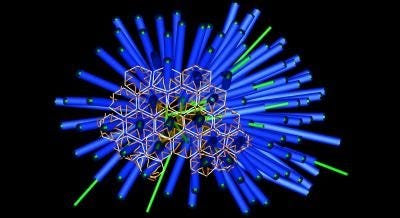That’s No Moon…
How bacterial “Death Stars” may contribute to the future of drug delivery
By Ashley Luo, Pharmaceutical Sciences, 2023

Drug delivery systems are constantly being developed to improve the delivery of therapeutics in humans. Recent studies have revealed an interesting new lead in this area of research. It may not be a galactic super weapon, but the “Death Star” is a feature of certain bacteria that holds the potential to be the next macromolecular super tool in the world of medicine and biotechnology.
These “Death Stars” are also known as a metamorphosis-associated contractile structure (MAC), which are a type of contractile injection system (CIS). CISs are structures that resemble syringes, utilized by certain bacteria to interact with other simple organisms. Generally, CISes have an inner tube surrounded by a sheath that can contract. A spike caps the inner tube and a hexagonal plate, the baseplate complex, is located at the base of the sheath. MACs are the first CISes discovered to form arrays of these syringe-like structures connected by tail fibers rather than functioning as a single structure. When the sheaths contract, the inner tubes and tail spikes quickly pierce through the membrane of the target cell, comparable to powerful laser beams. MACs are dubbed “Death Stars” because of this fast-paced injection sequence.
When the sheaths contract, the inner tubes and tail spikes quickly pierce through the membrane of the target cell, comparable to powerful laser beams.
As previously mentioned, MAC stands for metamorphosis-associated contractile structure. A study from the Shikuma lab has shown that a marine bacterium, Pseudoalteromonas luteoviolacea, produces MACs, which help induce metamorphosis in the tubeworm Hydroides elegans. These MACs deliver the effector protein Mif1 into the eukaryotic cells, which begins the process of metamorphosis for the tubeworm larva. However, the way the effector stimulates this process is still an unknown area of research. According to the lead scientist, Dr. Nicholas Shikuma — a microbiologist who is credited for discovering MACs along with his colleagues, “Lots of pathogens produce these syringe structures that typically cause disease, but this is the first time we discovered bacteria that use the syringe for a symbiotic purpose.”
“Lots of pathogens produce these syringe structures that typically cause disease, but this is the first time we discovered bacteria that use the syringe for a symbiotic purpose.”
The precise mechanism of MACs at such a small scale could be the basis of a novel drug delivery system to eukaryotic cells. A study from the Shikuma lab revealed a second effector that could be delivered by MACs. This suggests that there is a larger range of protein effectors that could be engineered and modified for therapeutic use through MACs. Continuing research on these structures may lead to a breakthrough in the near future. In fact, the Shikuma lab has recently identified a CIS within the human gut biome that is related to MACs. Since it may be modified to be able to inject therapeutics directly into human cells, this structure may be a new hope for the future of drug delivery.
DOI: 10.1016/j.celrep.2019.06.019
DOI: 10.1126/science.1246794
DOI: 10.7554/eLife.46845
DOI: 10.1101/865204